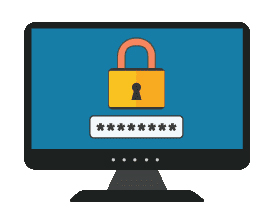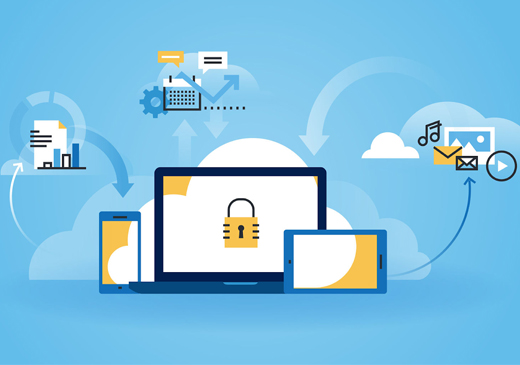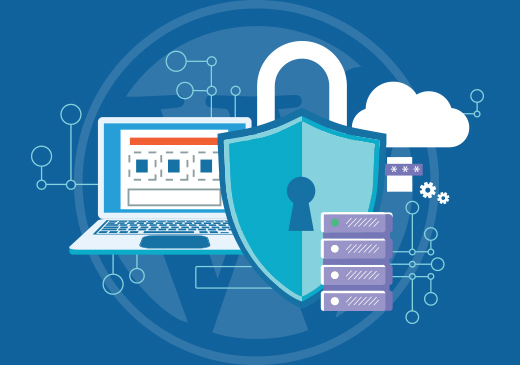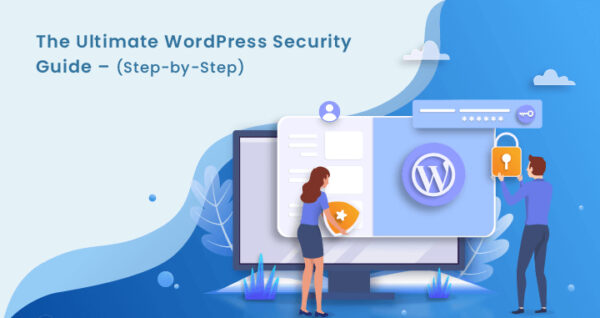Welcome to the Ultimate WordPress Site Security Guide! In this step-by-step guide, we will explore the importance of securing your WordPress site in 2023 and provide you with practical tips and techniques to keep your website safe from potential threats.
Understanding the Importance of WordPress Site Security
Security should be at the top of your priority list when it comes to managing your WordPress site. Neglecting site security can have severe consequences that may result in data breaches, loss of sensitive information, and damage to your site’s reputation.
Ensuring the security of your WordPress site involves implementing various measures to protect it from potential threats. These measures include using strong passwords, regularly updating WordPress and its plugins, and installing security plugins that provide additional layers of protection.
One of the consequences of neglecting site security is the increased risk of malware infections. Malware can be injected into your WordPress site through vulnerabilities in outdated plugins or themes, compromised third-party scripts, or malicious code hidden within files. Once infected, your site may be used to distribute malware to your visitors or become part of a larger botnet network.
Another significant consequence of poor site security is the risk of hacking attempts. Hackers constantly scan the internet for vulnerable WordPress sites, looking for loopholes they can exploit. Once they gain unauthorized access to your site, they can deface it, steal sensitive information, or even take control of your entire server. Recovering from a successful hacking attempt can be a time-consuming and costly process.
The Consequences of Neglecting Site Security
When site security is compromised, your website may become vulnerable to various attacks such as malware infections, hacking attempts, and unauthorized access. These security breaches can lead to the theft of user data, financial losses, and the disruption of site functionality. It’s essential to stay vigilant and take proactive measures to protect your WordPress site.
Loss of sensitive information is another consequence of neglecting site security. If your WordPress site handles user data such as login credentials, personal information, or payment details, a security breach can result in the exposure of this sensitive data. This can lead to identity theft, financial fraud, and legal consequences for your business.
Moreover, neglecting site security can damage your site’s reputation. When visitors discover that your site has been compromised, they may lose trust in your brand and choose to take their business elsewhere. Additionally, search engines like Google may flag your site as potentially harmful, leading to a drop in search rankings and a decrease in organic traffic.
Why WordPress Site Security is Crucial in 2023
In recent years, cyber threats have become more sophisticated, and the number of attacks on WordPress websites has increased significantly. As WordPress powers over 40% of all websites on the internet, it becomes an attractive target for hackers. By implementing robust security measures, you can safeguard your site against these potential threats.
One reason why WordPress site security is crucial in 2023 is the rise of ransomware attacks. Ransomware is a type of malicious software that encrypts your site’s files and holds them, hostage, until you pay a ransom. These attacks can disrupt your business operations, cause financial losses, and tarnish your reputation.
Additionally, with the growing popularity of e-commerce, WordPress sites are handling more sensitive customer information than ever before. This includes credit card details, addresses, and other personal data. Protecting this information is not only a legal requirement but also crucial for maintaining customer trust and loyalty.
Furthermore, as the internet continues to evolve, new vulnerabilities and exploits are discovered regularly. Cybercriminals are quick to exploit these vulnerabilities, making it essential for WordPress site owners to stay up to date with the latest security practices and technologies. By investing in robust security measures, you can mitigate the risks and ensure the long-term success of your WordPress site.

Basic WordPress Security Measures
Securing your WordPress site doesn’t have to be complicated. By following some basic security measures, you can significantly reduce the risk of potential attacks.
WordPress is one of the most popular content management systems (CMS) in the world, powering millions of websites. However, its popularity also makes it a target for hackers and malicious actors. Therefore, it is essential to take proactive steps to protect your WordPress site from potential security breaches.
Regular Updates: The First Line of Defense
Keeping your WordPress core, plugins, and themes up to date is crucial for site security. Updates often include bug fixes, security patches, and new features that improve the overall stability and security of your website. By regularly updating your WordPress installation, you ensure that any known vulnerabilities are addressed and patched, making it harder for hackers to exploit them.
WordPress provides an easy-to-use interface for updating your core files, plugins, and themes. You can simply navigate to the “Updates” section in your WordPress dashboard and follow the prompts to install the latest updates. It is recommended to check for updates at least once a week to stay on top of any security fixes.
Strong Passwords and User Permissions
Creating strong, unique passwords and implementing strong user permissions is an effective way to prevent unauthorized access to your WordPress site. Weak passwords are one of the most common entry points for hackers, so it is crucial to choose passwords that are difficult to guess.
When creating a password, consider using a combination of uppercase and lowercase letters, numbers, and special characters. Avoid using common passwords, such as “password” or “123456,” as these can be easily cracked by automated hacking tools.
Furthermore, it is essential to regularly change your passwords to maintain security. Set a reminder to update your passwords every few months or whenever there is a potential security threat.
In addition to strong passwords, implementing user permissions can further enhance the security of your WordPress site. WordPress allows you to assign different roles to users, such as administrators, editors, authors, and subscribers. By limiting user access to specific areas of your site based on their roles, you can prevent unauthorized users from making critical changes or accessing sensitive information.
Implementing Two-Factor Authentication
Two-factor authentication adds an extra layer of security to your WordPress site. By requiring users to provide a second form of verification, such as a code sent to their mobile device, you can prevent unauthorized access even if a password is compromised.
There are various plugins available that can streamline the two-factor authentication process for your site. These plugins typically work by sending a unique code to the user’s mobile device or email address, which they must enter in addition to their password when logging in. This additional step significantly reduces the risk of unauthorized access, as an attacker would need both the user’s password and physical access to their mobile device or email account.
Popular two-factor authentication plugins for WordPress include Google Authenticator, Duo Two-Factor Authentication, and Clef. These plugins are easy to install and configure, providing an extra layer of security without compromising user experience.
In conclusion, securing your WordPress site is essential to protect your website, your data, and your users. By following these basic security measures, such as regular updates, strong passwords, user permissions, and two-factor authentication, you can significantly reduce the risk of potential attacks and ensure the long-term security of your WordPress site.

Advanced WordPress Security Techniques
While basic security measures are essential, advanced techniques can further strengthen your WordPress site’s security. In this article, we will explore some additional strategies that you can implement to enhance the protection of your website.
Using Security Plugins for Enhanced Protection
WordPress offers a plethora of security plugins that can help fortify your website against potential threats. These plugins provide features such as malware scanning, firewall protection, and login rate limiting. By installing a security plugin, you can add an extra layer of defense to your WordPress site.
One popular security plugin is Wordfence. It not only scans your website for malware but also includes a firewall that can block malicious traffic. Another option is Sucuri, which offers a comprehensive suite of security features, including malware removal and website monitoring.
When choosing a security plugin, it’s essential to consider your specific security needs. Some plugins focus on specific vulnerabilities, such as brute force attacks or SQL injections, while others provide a broader range of protection. Take the time to research and compare different plugins to find the one that best suits your requirements.
Understanding and Implementing SSL Certificates
An SSL certificate encrypts data transferred between your website and its visitors, ensuring secure communication. Implementing an SSL certificate is particularly vital if your site collects sensitive information, such as login credentials or payment details.
Many web hosting providers offer free SSL certificates through Let’s Encrypt or other certificate authorities. Installing an SSL certificate is a straightforward process, and most hosting providers provide step-by-step instructions or even automated installation tools.
Once you have installed an SSL certificate, your website’s URL will change from “http://” to “https://”. Visitors will also see a padlock icon in their browser’s address bar, indicating that the connection is secure. This visual cue can help build trust with your users and reassure them that their data is protected.
The Role of Web Application Firewalls
Web application firewalls (WAFs) act as a shield between your WordPress site and potential threats. They analyze incoming web traffic and block suspicious requests, preventing malicious attacks before they can reach your site.
There are different types of WAFs available, including cloud-based and server-based options. Cloud-based WAFs, such as Cloudflare, intercept traffic before it reaches your server, providing an additional layer of protection. Server-based WAFs, on the other hand, are installed directly on your server and can offer more granular control over the security settings.
Utilizing a WAF can significantly reduce the risk of unauthorized access, SQL injections, and cross-site scripting (XSS) attacks. These security measures work in conjunction with your existing security plugins to create a robust defense system for your WordPress site.
However, it’s important to note that while security plugins and WAFs can greatly enhance your website’s security, they are not foolproof. Regularly updating your WordPress core, themes, and plugins, as well as implementing strong passwords and user access controls, are still crucial for maintaining a secure website.
In conclusion, by implementing advanced security techniques such as using security plugins, SSL certificates, and web application firewalls, you can significantly enhance the protection of your WordPress site. These measures work together to create a multi-layered defense system, safeguarding your website and its visitors from potential threats.

Dealing with Security Breaches
Despite your best efforts, there is always a possibility of a security breach. Being prepared and knowing how to respond can minimize the impact of such incidents.
Identifying Signs of a Security Breach
Signs of a security breach can include unusual website behavior, unexplained file changes, unauthorized account access, or unexpected data leaks. Regularly monitoring your site’s logs and keeping an eye on security notifications can help you identify these signs early on.
Steps to Take After a Security Breach
If you suspect a security breach, it’s essential to act swiftly. First, remove any malware or malicious code from your website. Change all passwords, including those of your WordPress admin account and hosting account. Additionally, review your site’s security measures and implement additional safeguards to prevent future breaches.
Preventing Future Security Breaches
Learn from past security breaches and take proactive measures to prevent similar incidents in the future. Regularly update your site’s software, reinforce user permissions, and monitor your site for any suspicious activity. Being proactive can significantly reduce the risk of future security breaches.
In conclusion, securing your WordPress site is of utmost importance in 2023. By understanding the consequences of neglecting site security and implementing a range of measures, from basic to advanced techniques, you can safeguard your website against potential threats. Remember, the key to site security lies in staying vigilant, staying informed, and staying one step ahead of those who may seek to compromise your precious online assets.

